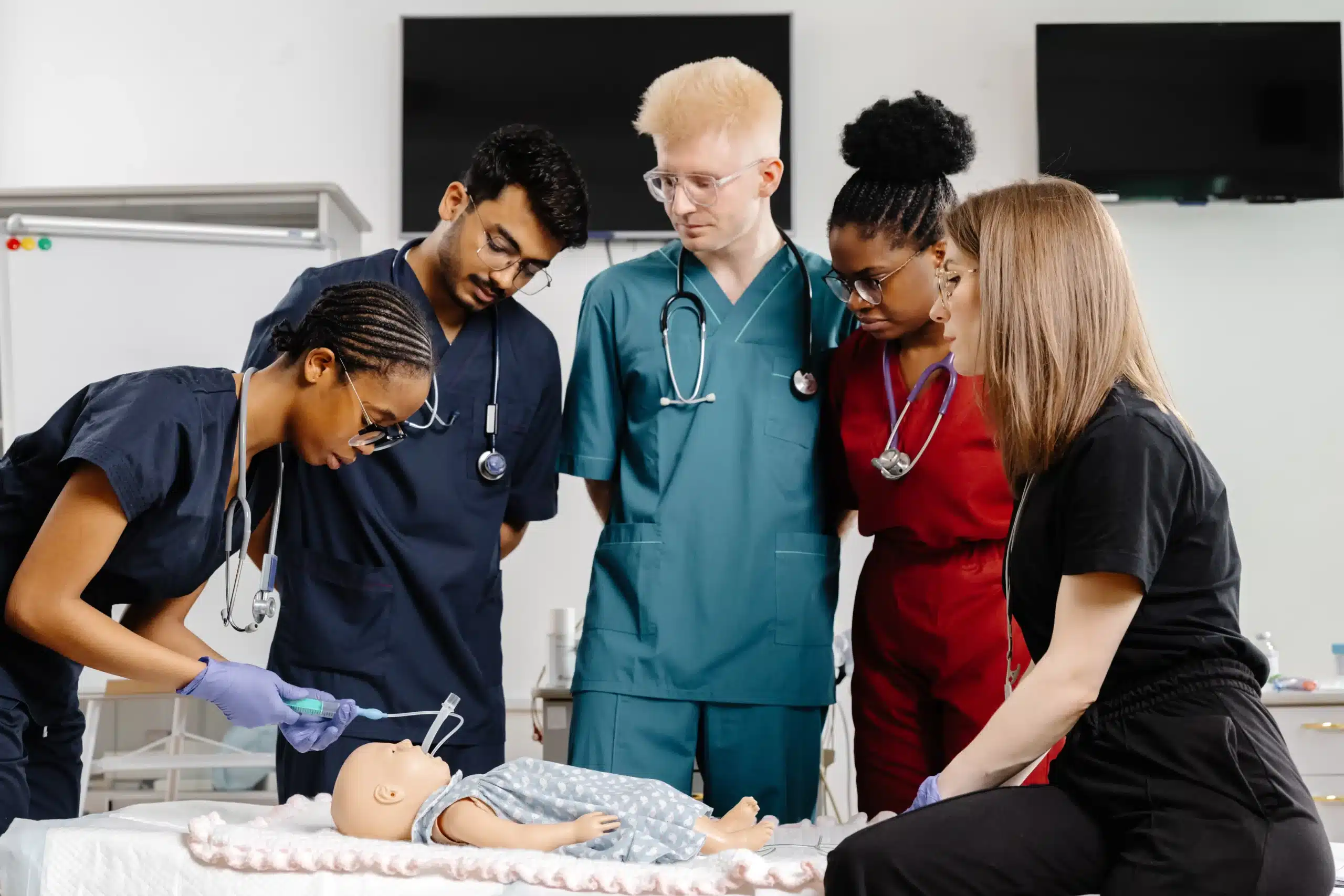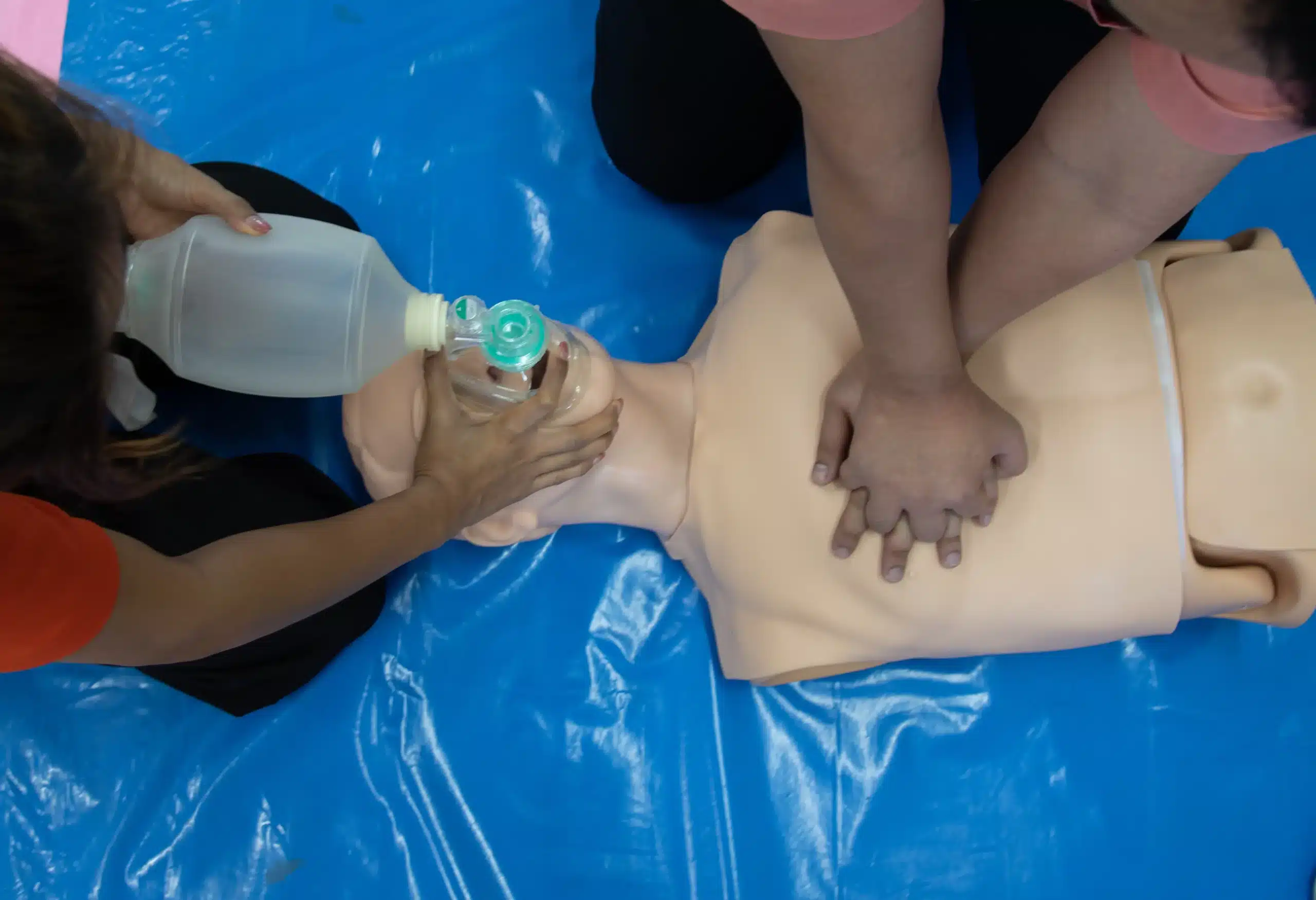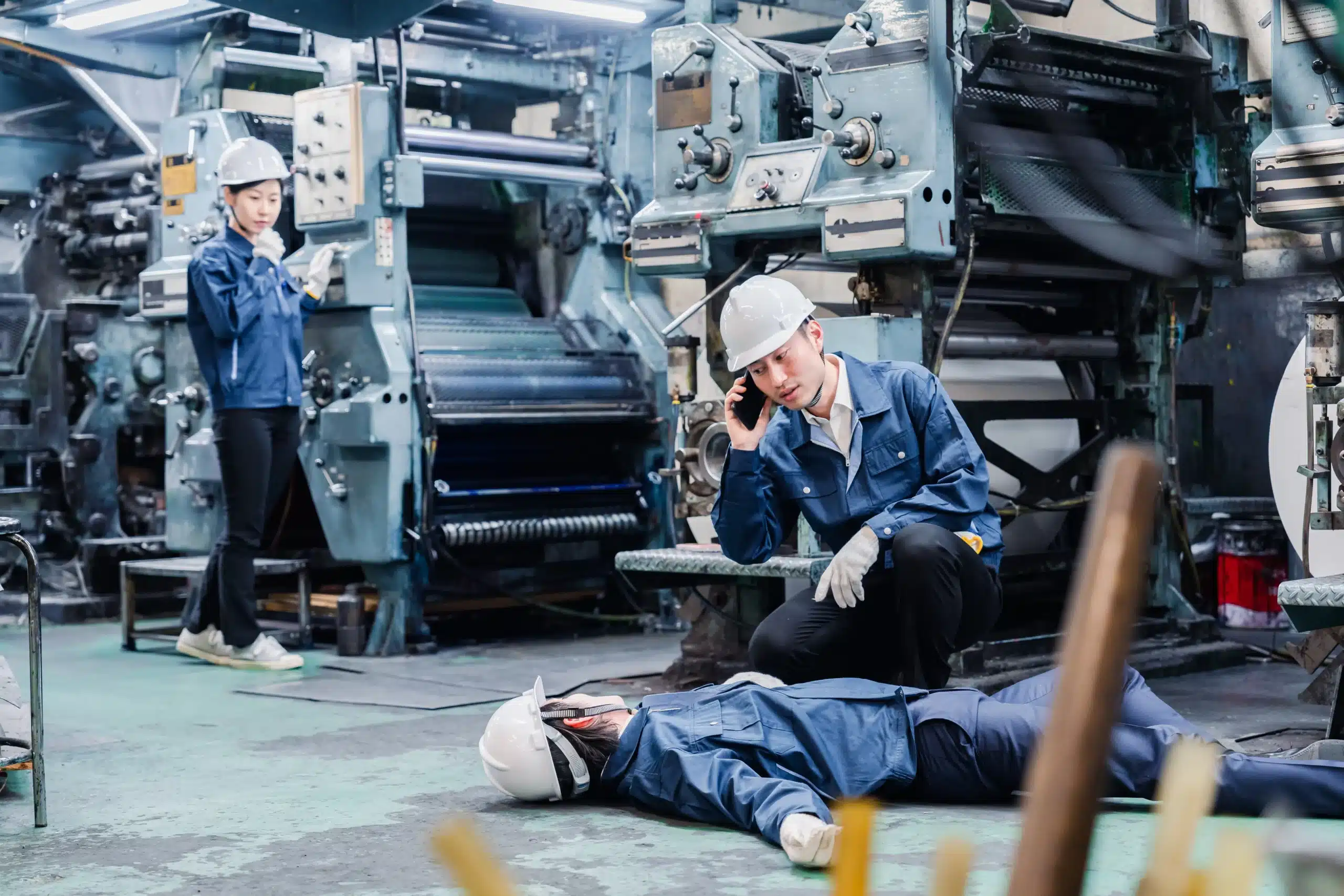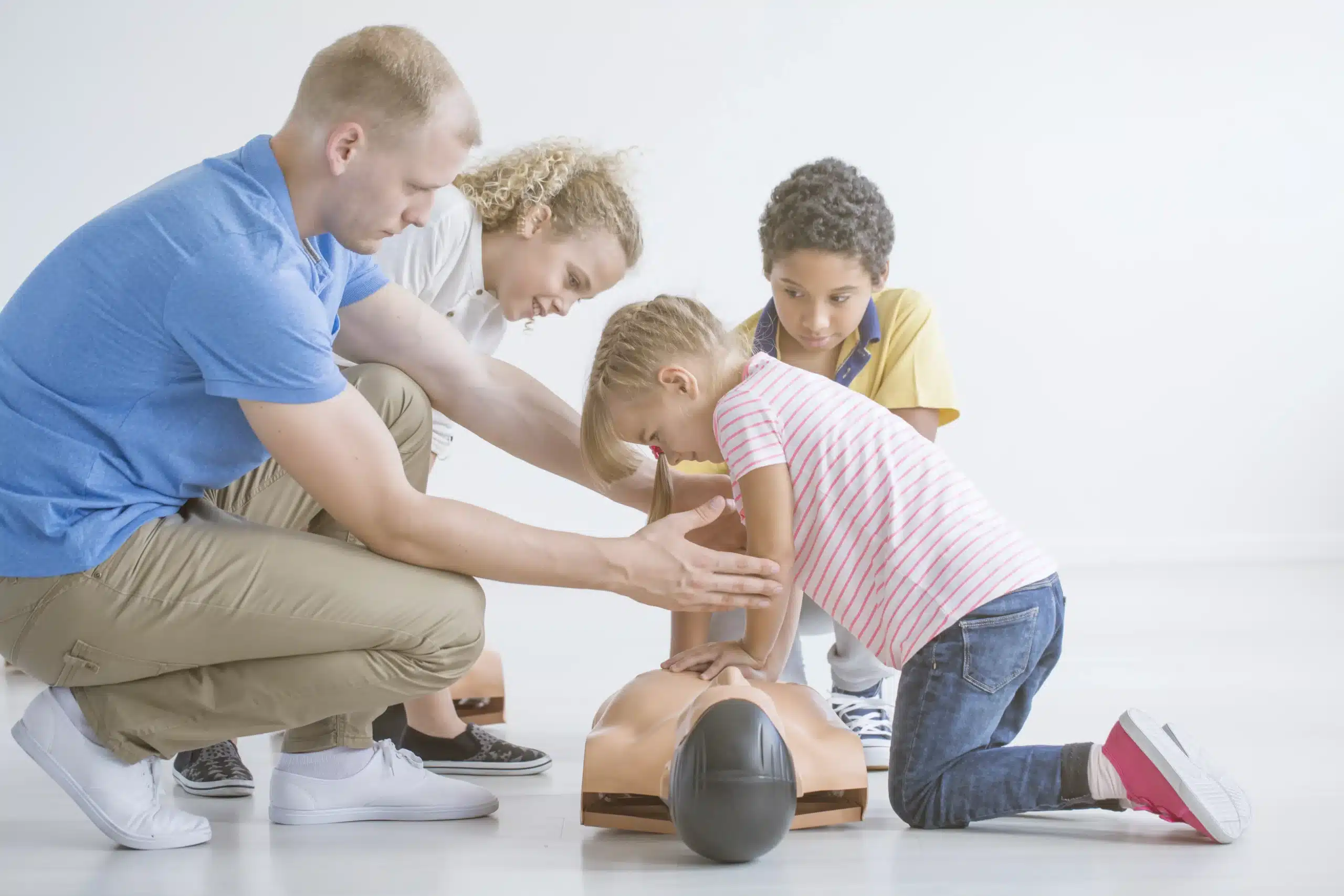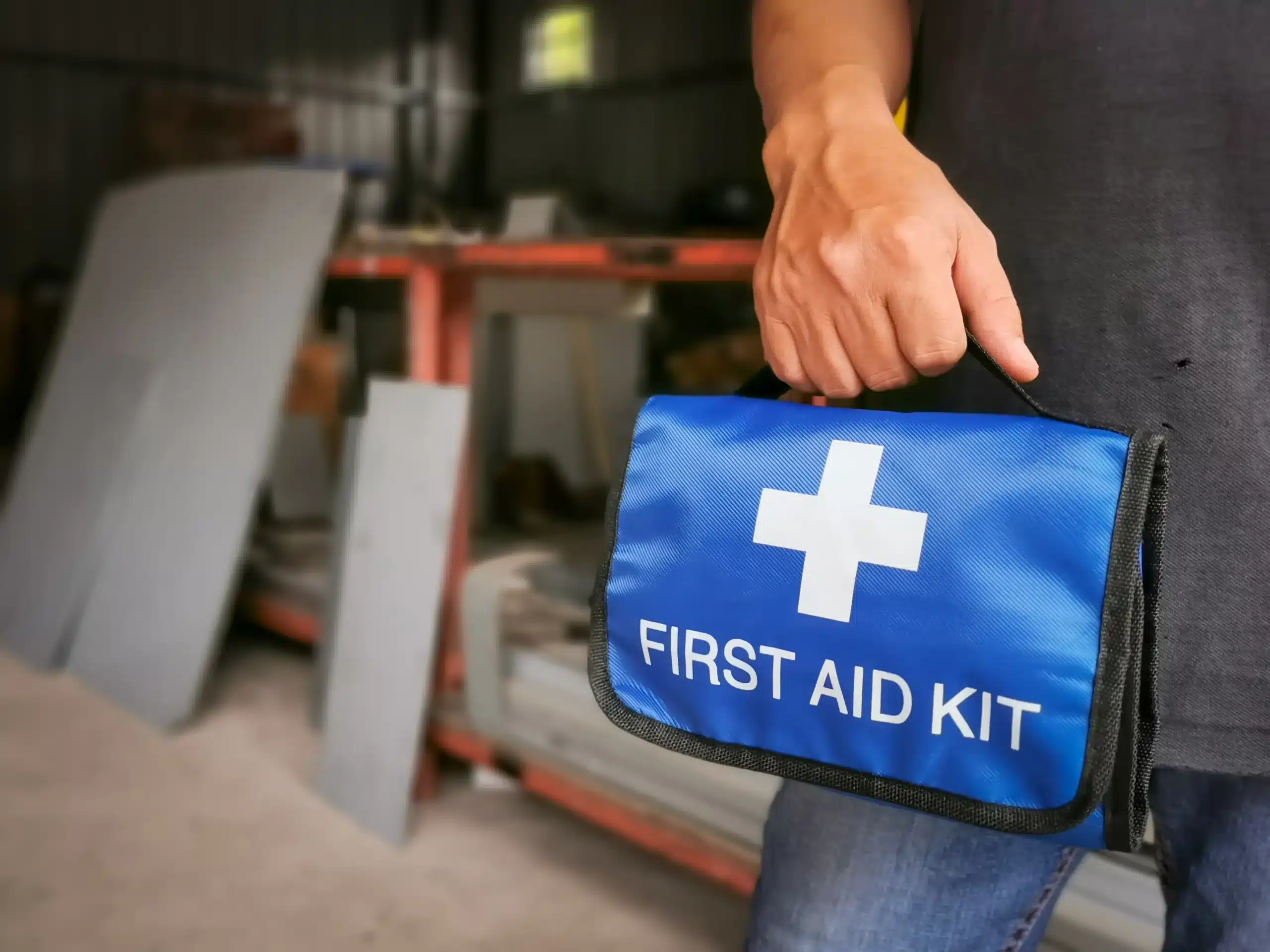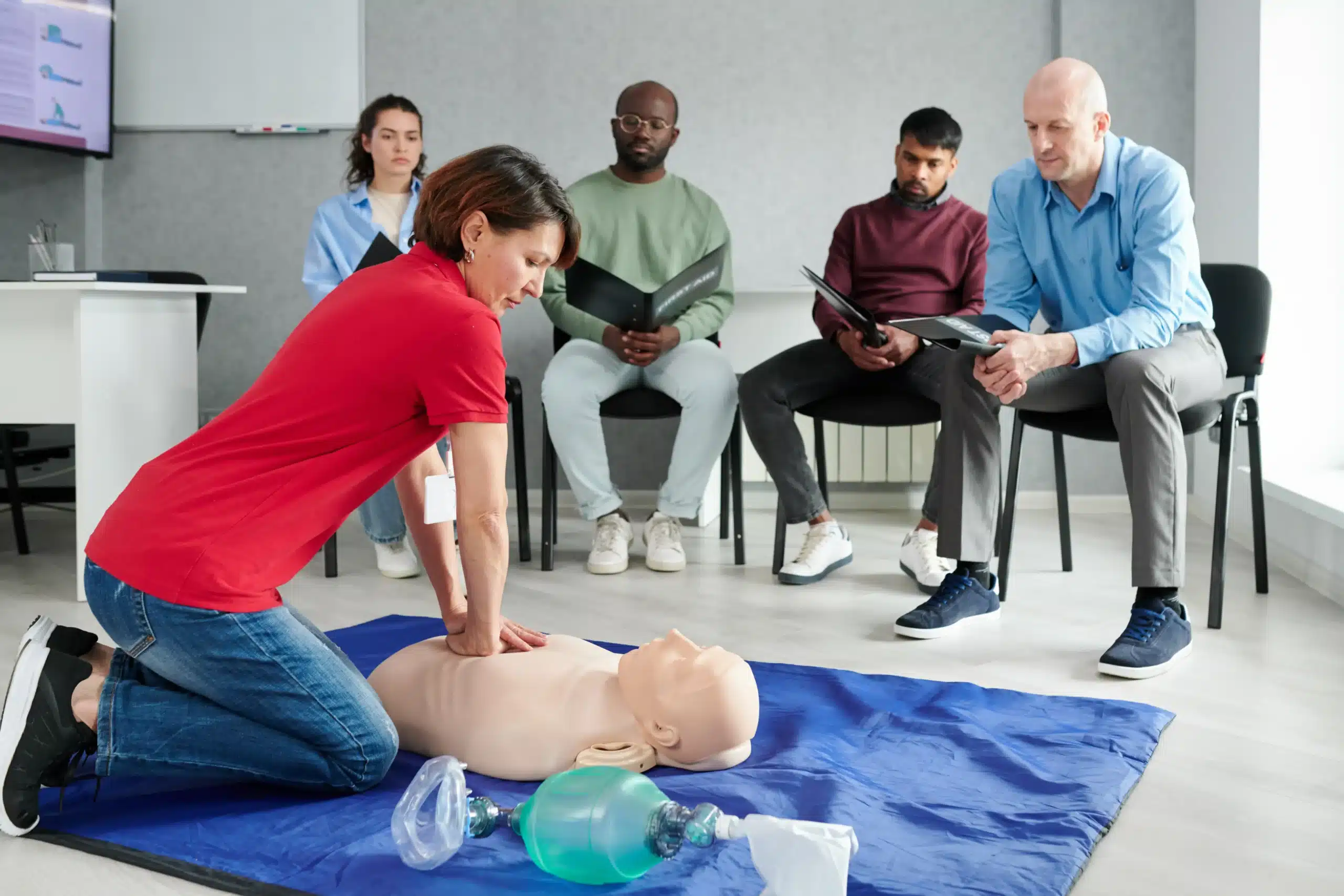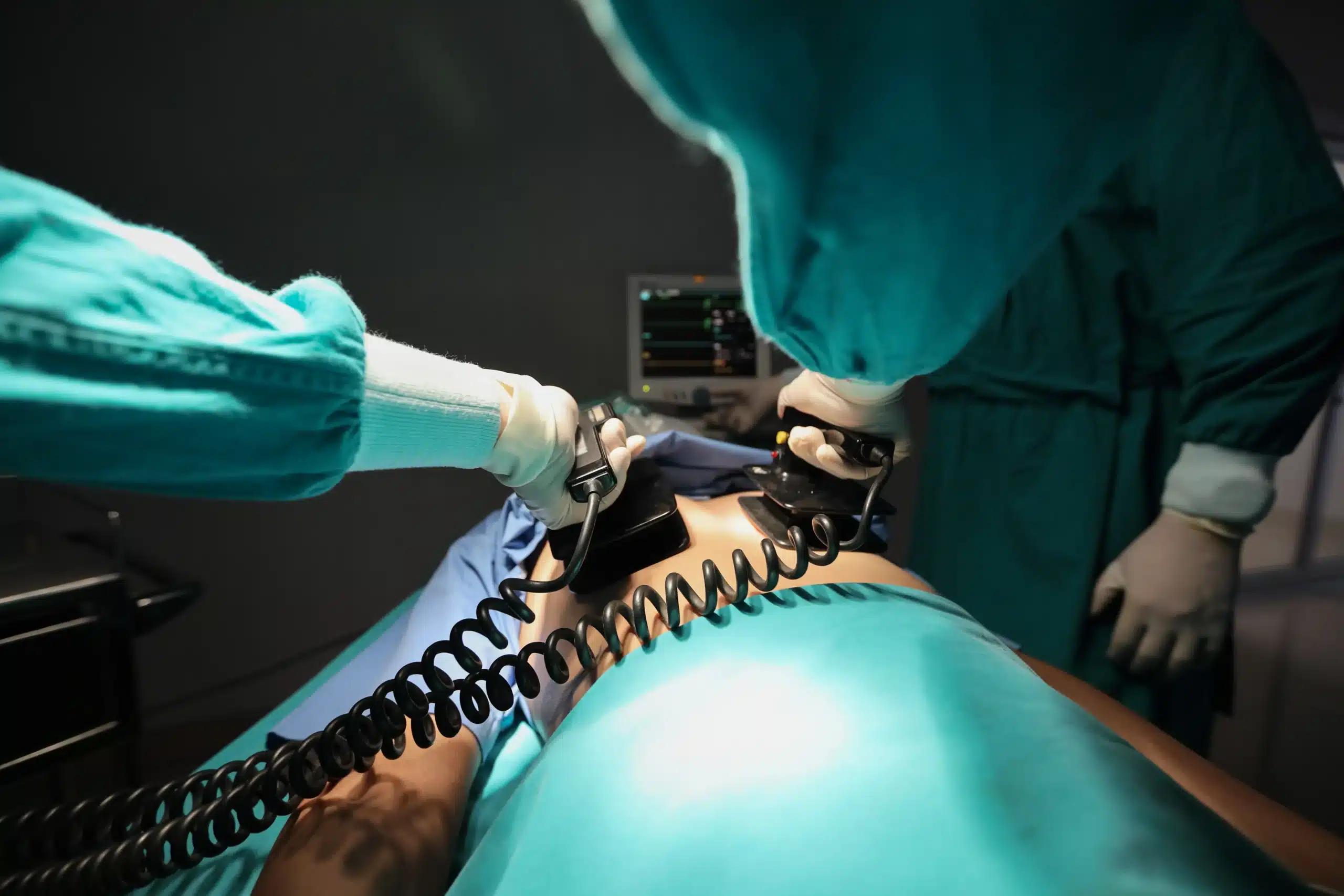Empowering yourself with life-saving skills is one of the most valuable things you can do. BLS certification—Basic Life Support—provides you with the knowledge and confidence to respond effectively in medical emergencies. This guide is designed to answer all your questions about BLS, from understanding the core skills to finding “BLS classes near me” that fit your schedule and learning style. We’ll explore the different types of BLS courses, discuss what to expect during training, and help you choose a reputable provider. Let’s embark on this journey together and equip you with the skills to make a real difference.
Key Takeaways
- BLS certification equips you with essential life-saving skills: Beyond CPR, BLS training covers a wider range of techniques, including using an AED and managing airways, to handle various medical emergencies. Choose a course format—in-person, blended, or online—that suits your learning style and schedule.
- Select a reputable training provider: Prioritize AHA-approved courses, read reviews, and compare local and national providers based on your preferences. Consider factors like cost, schedule flexibility, and the amount of hands-on practice offered.
- Prepare for your BLS class: While pre-course studying isn’t mandatory, understanding the basics can be helpful. Knowing what to expect and arriving prepared will make your learning experience more effective. Look for providers who offer clear information on what to bring and any pre-class recommendations.
What is BLS?
Basic Life Support (BLS) is a critical set of life-saving skills for healthcare providers and first responders. It goes beyond basic CPR, equipping professionals with the knowledge and techniques to handle cardiac arrest, respiratory distress, and airway obstructions. BLS certification covers core skills like high-quality CPR, using an automated external defibrillator (AED), and basic airway management. These skills are essential for quick intervention in emergencies, significantly improving a patient’s chances of survival. The BLS guidelines also emphasize the importance of administering epinephrine during cardiac arrest. BLS training ensures you can effectively perform CPR, use an AED, and manage choking incidents, making it a vital skill set for anyone in the healthcare field. If you’re looking for BLS classes near me, understanding what BLS entails is the first step in finding the right training program.
Types of BLS Classes
Choosing the right BLS class format depends on your learning style, schedule, and preferences. Let’s break down the main types of BLS classes available.
In-Person BLS
In-person BLS classes offer a traditional classroom setting with hands-on training and direct interaction with an instructor. This format is ideal for those who learn best through face-to-face instruction and prefer immediate feedback. Instructors guide you through the skills, answer your questions in real-time, and provide personalized support. In-person training ensures you develop the confidence and competence to perform BLS effectively in real-life scenarios. These courses often include demonstrations, practice sessions, and assessments to evaluate your understanding and skills.
Online BLS
Online BLS courses offer a flexible alternative for individuals with busy schedules or limited access to in-person classes. These courses typically involve online modules, videos, and interactive exercises that cover the theoretical aspects of BLS. While some organizations offer online components, it’s important to remember that a fully online AHA-certified BLS course isn’t available. You’ll still need to complete an in-person skills assessment to receive your official certification. This blended approach allows you to learn the material at your own pace and then demonstrate your skills in a practical setting.
Blended Learning BLS
Blended learning BLS courses combine the convenience of online learning with the benefits of in-person skills practice. This hybrid approach allows you to study the theoretical concepts online at your own pace, then attend an in-person session to practice and refine your skills under the guidance of an instructor. Blended learning offers a balanced approach, providing flexibility while ensuring you receive the hands-on training necessary for effective BLS performance. This format is particularly helpful for those who prefer a more self-directed learning experience but still value the opportunity for in-person interaction and feedback.
Find Reputable BLS Certification Providers
Finding the right BLS certification provider is crucial for a valuable learning experience. Here’s what to consider when making your decision:
Accreditation and Certification
First and foremost, ensure the course is AHA-approved. The American Heart Association (AHA) sets the gold standard for BLS Certification. Many employers, including hospitals and clinics, require AHA-approved certifications to maintain high standards for their staff. This accreditation guarantees you’re receiving training aligned with the latest research and best practices. Verify the provider’s credentials and confirm they offer AHA-approved BLS certification before enrolling. Safety Training Seminars offers AHA-approved BLS training, ensuring your certification meets industry standards.
Reviews and Testimonials
Reading reviews and testimonials offers valuable insights into other students’ experiences. Look for comments about the quality of instruction, the hands-on training component, and the overall learning environment. Sites like Google My Business and Yelp can be excellent resources for finding honest feedback. Positive reviews often indicate a provider’s commitment to student success. Consider checking with your local hospital or clinic for recommendations as well.
Local vs. National Providers
Choosing between a local and national provider depends on your specific needs and preferences. Local providers, like Safety Training Seminars, offer the advantage of personalized attention and smaller class sizes, creating a more focused learning experience. They are also more likely to be attuned to the specific requirements of healthcare facilities in your area. National providers may offer greater scheduling flexibility and a wider range of course formats, including online and blended learning options. Consider what matters most to you—personalized instruction or scheduling convenience—when making your choice. If you prefer in-person training with hands-on practice, a local provider is often the best option.
BLS Class Costs
Knowing the real cost of BLS certification upfront helps you budget effectively. Let’s break down the typical expenses.
Average Pricing
BLS certification typically costs between $20 and $60, depending on the training provider and course type. Materials, like textbooks or pocket masks, might add another $20 to $30. Online BLS certification is often more affordable. For example, the National CPR Foundation offers an online BLS course for $14.95, covering CPR, AED use, and First Aid. At Safety Training Seminars, we strive to keep our prices competitive and offer the lowest prices in Santa Clara County.
Discounts and Group Rates
Many organizations offer discounts for group registrations or package deals if you need multiple certifications. For instance, RCPALS offers a combined ACLS, PALS, and BLS package for $400. Some providers also offer lower rates for private classes, which can be a good option for workplaces training multiple employees. Always check with your chosen provider about potential discounts. We offer group discounts at Safety Training Seminars to make training more accessible.
Hidden Costs
Be mindful of potential hidden costs. Some organizations charge cancellation fees if you don’t provide sufficient notice. Others might have separate fees for certification cards or recertification. Understanding the full cost from the start makes planning much easier. Our low price guarantee ensures transparent pricing with no hidden fees.
What to Expect in a BLS Class
So, you’ve signed up for a BLS class—congratulations! Knowing what to expect can help you feel prepared and confident. Here’s a rundown of what you’ll experience:
Course Content
BLS classes cover the core skills needed to respond to life-threatening emergencies. You’ll learn adult, child, and infant CPR, how to use an automated external defibrillator (AED), and how to relieve choking. Many courses also incorporate team dynamics and effective communication strategies for working in high-pressure situations. At Safety Training Seminars, our BLS certification courses follow the latest American Heart Association guidelines.
Hands-On Practice
BLS isn’t just about memorizing facts—it’s about developing practical skills. Expect a significant portion of your class to involve hands-on training. You’ll practice CPR compressions and rescue breaths on manikins, learn how to operate an AED, and work through various choking scenarios. This practical experience is crucial for building muscle memory and the confidence to act quickly in a real emergency. Our instructors at Safety Training Seminars emphasize hands-on learning to ensure you’re fully prepared.
Certification and Exam
Most BLS classes include a written exam and a practical skills test. You’ll demonstrate your understanding of the material and your ability to perform the skills correctly. The focus is on ensuring you’re competent. Upon successful completion, you’ll receive your BLS certification card, typically valid for two years. Check out our low price guarantee. We also offer the RQI program for healthcare professionals.
BLS Certification: Duration and Validity
Initial Certification Time
BLS certification equips you with the skills to respond effectively in emergencies, significantly improving patient outcomes and giving you the confidence to act quickly. Earning your BLS certification usually involves a course that can take a few hours or a full day, depending on the training provider and the depth of the course. Some providers offer accelerated BLS courses, while others take a more comprehensive approach. Check with your chosen provider, like Safety Training Seminars, to understand their course structure and time commitment.
Renewal Requirements
Your BLS certification is typically valid for two years. To maintain your skills and stay current with the latest guidelines, recertification is essential. Renewal courses are widely available, often designed for those whose certifications are nearing expiration. Many providers, including Safety Training Seminars, offer recertification courses for those whose certifications are within 30 days of expiring. Staying current with your BLS certification ensures you’re always prepared to deliver high-quality care in emergencies. The American Heart Association provides resources and information on BLS renewal, including the latest guidelines and best practices. Regular renewal demonstrates your commitment to maintaining a high standard of care and ensures you’re equipped with the most current life-saving techniques. Recertification courses refresh your knowledge and skills, keeping you prepared for any emergency.
Choose the Right BLS Class
Finding the right BLS class involves understanding your needs and researching various providers. It’s a bit like choosing the right gym—you want the best fit for your learning style and schedule.
Factors to Consider
Think about how you learn best and how much time you can commit. Do you thrive in a traditional classroom with face-to-face instruction? Or do you prefer the flexibility of online learning? Maybe a blended learning approach—combining online modules with in-person skills practice—suits you best. Consider your schedule, too. Some classes are offered on weekends or evenings to accommodate busy professionals. If you need a class quickly, check which providers have sessions that fit your timeframe. At Safety Training Seminars, we offer a variety of schedules and formats. Check out our BLS course options to see what works for you.
Another key factor is the emphasis on hands-on training. BLS skills require practical application, especially when using an AED. Make sure the class you choose includes ample opportunity for hands-on practice with equipment like AED trainers. This practical experience is essential for building confidence and competence in life-saving techniques.
Compare Providers
Once you’ve considered your learning style and schedule, it’s time to compare different BLS course providers. First, confirm the course is approved by the American Heart Association. This ensures the training meets the latest standards and guidelines. Next, look into the instructors’ qualifications. Experienced instructors, especially those with real-world experience, can provide valuable insights and make learning more engaging. Reading online reviews can also be helpful. Previous students often share their experiences, giving you a glimpse into the quality of instruction and the overall learning environment. Finally, compare pricing. While cost shouldn’t be the only factor, it’s wise to find a provider that offers competitive rates without compromising quality. We’re proud to offer the lowest prices in Santa Clara County at Safety Training Seminars. We believe that high-quality BLS training should be accessible to everyone.
BLS Class Providers in Sunnyvale, CA
Finding the right BLS class is easier than you think, especially with several excellent providers in and around Sunnyvale. Here’s a rundown of reputable options to help you get started.
Safety Training Seminars
Safety Training Seminars, a woman-owned American Heart Association Training Center, is conveniently located in Sunnyvale. They offer a range of courses, including BLS, ACLS, PALS, CPR, and First Aid. Their focus is on delivering high-quality training at competitive prices. BLS classes typically cost around $120, covering your training materials, skills testing, and a two-year certification card. With classes offered daily, finding a convenient time shouldn’t be a problem. Learn more about their BLS training.
American Heart Association
The American Heart Association (AHA) sets the standard for BLS training, equipping people with the skills to respond confidently in emergencies. You can find AHA-certified courses in Sunnyvale through various training centers, including Safety Training Seminars. The AHA’s BLS program is designed for both healthcare professionals and community members, ensuring everyone can access this vital training. Sunnyvale CPR Classes offers AHA-certified courses in the area.
American Red Cross
The American Red Cross is another trusted provider of BLS training nationwide. They typically offer comprehensive courses that include hands-on practice and certification. Visit the American Red Cross website for more information and to find a class near you.
Local Hospitals and Community Centers
Many local hospitals and community centers in Sunnyvale offer BLS training as part of their community health programs. These institutions often tailor classes to specific groups, such as healthcare providers or the general public. Contacting local hospitals directly or browsing their websites is a smart way to learn about upcoming BLS classes.
Prepare for Your BLS Class
Getting ready for your BLS class involves a little prep work before you arrive. Knowing what to expect and how to prepare can make your learning experience smoother and more effective.
Required Materials
Most BLS courses, including those offered by Safety Training Seminars, don’t require you to bring anything other than yourself and a willingness to learn. All necessary materials, like mannequins for CPR practice and AED trainers, are provided in class. However, it’s always a good idea to bring a pen and notepad to jot down any notes or questions. Double-check with your chosen provider to confirm their specific requirements. For example, if you’re taking the RQI program with us, we’ll provide all the details you need beforehand.
Pre-Course Study Tips
While pre-course study isn’t mandatory for BLS certification, familiarizing yourself with the basics can give you a head start. BLS certification includes critical emergency response skills like CPR, AED usage, and basic airway management. Brushing up on these topics can boost your confidence and help you absorb the material more effectively. You can find helpful resources and online materials from reputable organizations like the American Heart Association. Regularly practicing BLS skills, even before class, can help build muscle memory.
Day-of-Class Essentials
On the day of your class, make sure you arrive on time and ready to learn. Dress comfortably, as you’ll be participating in hands-on activities. A good night’s sleep and a healthy meal beforehand will help you stay focused and energized. Most importantly, ensure your course is approved by the American Heart Association to guarantee you receive a valid and recognized certification. Our courses at Safety Training Seminars meet these requirements, and we even offer a low price guarantee for our classes in Santa Clara County. We encourage you to take advantage of our discount group classes if you’re signing up with friends or colleagues.
Common BLS Training Misconceptions
It’s easy to get confused about BLS training, especially if you’re new to healthcare or first aid. Let’s clear up a few common misconceptions.
BLS vs. CPR
One common misconception is that BLS and CPR are the same. While CPR is a core component of BLS, BLS certification covers a broader range of lifesaving skills. Think of BLS as CPR+, encompassing techniques like using an AED, basic airway management, and assisting someone who is choking. BLS training equips you with a more comprehensive skillset to handle various medical emergencies.
Importance of In-Person Skills Assessment
While some aspects of BLS can be learned online, hands-on, in-person training is essential for developing true competency. In-person skills assessments allow you to practice techniques in a realistic environment, building the confidence and muscle memory needed to respond effectively under pressure.
Who Benefits from BLS Training
Another misconception is that BLS training is only for healthcare professionals. In reality, BLS certification is a valuable asset for anyone who might need to provide immediate medical assistance. Teachers, coaches, parents, childcare providers—anyone who interacts with others regularly—can benefit from knowing these lifesaving techniques. BLS certification empowers individuals to respond confidently and effectively in a crisis, potentially making a life-saving difference.
Related Articles
- BLS Certification in San Jose: The Ultimate Guide – Sunnyvale CPR Classes
- BLS Classes in Sunnyvale: A Complete Guide
- BLS Certification Sunnyvale: Your Comprehensive Guide – Sunnyvale CPR Classes
- BLS Courses in San Jose: Your Complete Guide – Sunnyvale CPR Classes
- BLS for Healthcare Providers in Santa Clara: A 2024 Guide – Sunnyvale CPR Classes
Frequently Asked Questions
What’s the main difference between BLS and CPR? CPR is a vital part of BLS, but BLS covers more ground. It includes CPR, but also teaches you how to use an AED, manage someone’s airway, and help if they’re choking. It gives you a wider range of skills for different emergencies.
Is online BLS certification enough, or do I need in-person training? While online BLS courses offer flexibility for learning the material, a hands-on skills assessment with a certified instructor is essential to get your BLS certification. This practical test ensures you can perform the skills correctly under pressure.
How much does BLS certification typically cost, and are there ways to save? BLS certification usually costs between $70 and $120. Look for group discounts, package deals (if you’re taking other courses too), or special offers from local providers like Safety Training Seminars. Always ask about potential discounts to make training more affordable.
How long is a BLS class, and how long is the certification valid? BLS classes can range from a few hours to a full day, depending on the provider and how in-depth the course is. Once certified, your BLS card is typically good for two years.
What should I expect during a BLS class? Expect a mix of learning the material and practicing the skills. You’ll cover essential techniques like CPR, using an AED, and helping someone who’s choking. A big part of the class will involve hands-on practice with mannequins and AED trainers, so you can build confidence and muscle memory. You’ll also likely have a written exam and a practical skills test to earn your certification.
